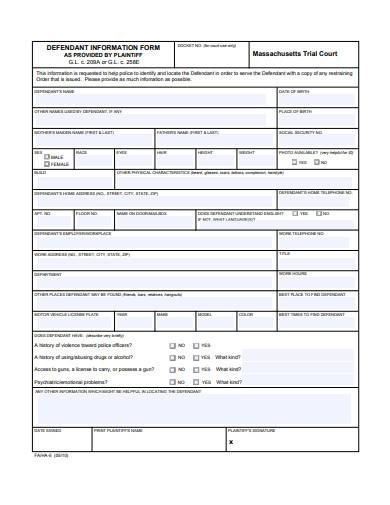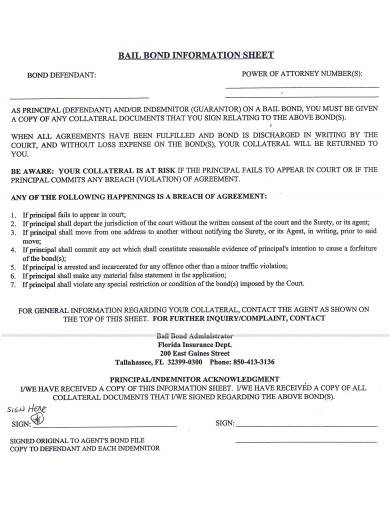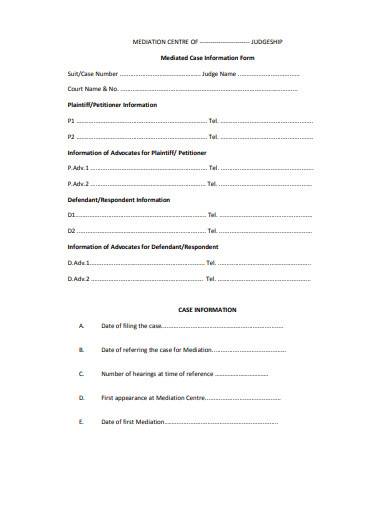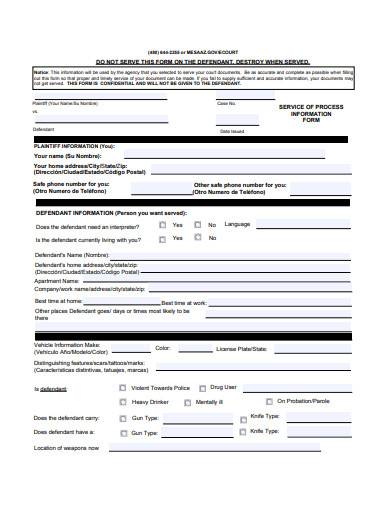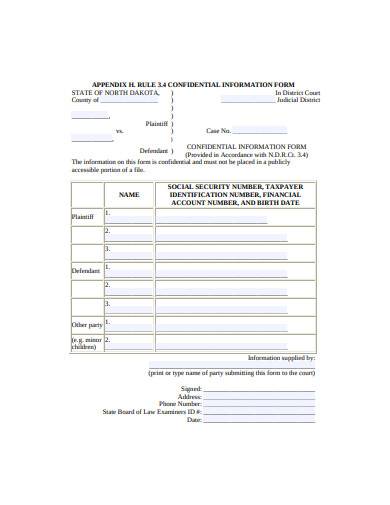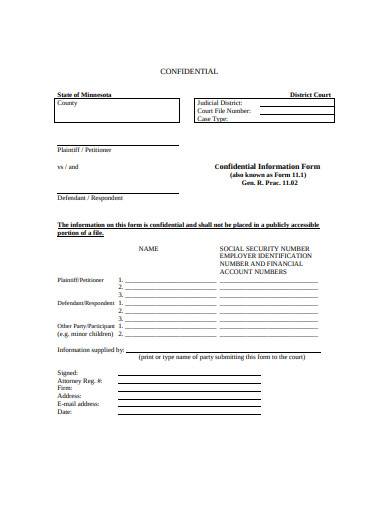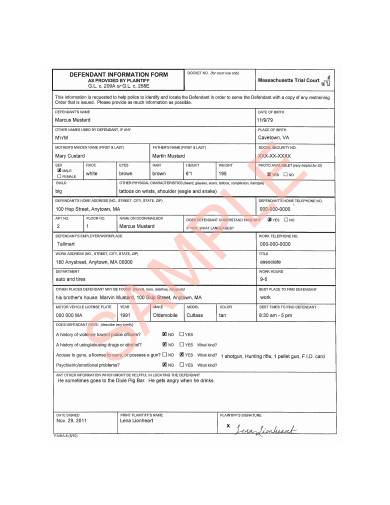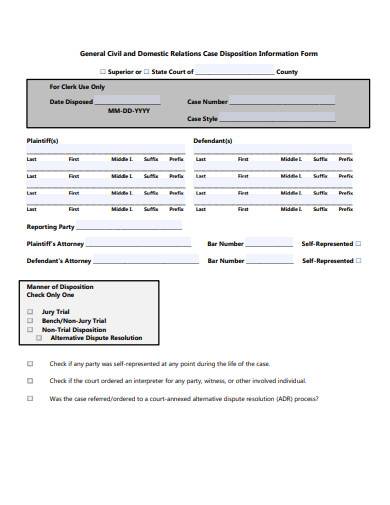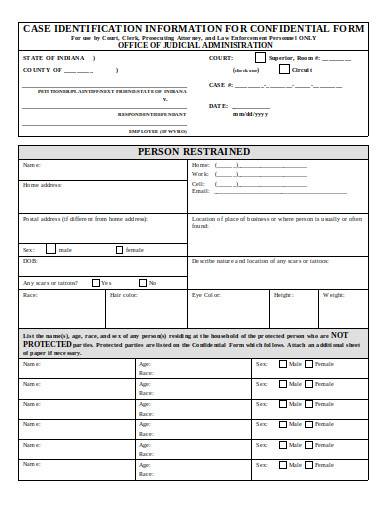Forgetting your workmate’s name can be forgivable, and not knowing where your cousin lives can also be considerable. However, if you’re in court, and you’re the attorney who will be presenting the details of your client, having a forgetful mind will lead you to various sanctions. And that’s why it’s essential to have the complete data of the involved parties, especially if your client is the defendant. In specific, you must use a defendant information form for that matter.
Defendant Information Form: Importance of Accurate Data
Imagine receiving a notice to attend a hearing for a case that you have no idea of? And when reading through it, you find your name as the defendant. What would you do? Well, aside from getting confused, you have to inform the court right away about your concern. But, that same situation happened back in 2013. According to Madison – St. Claire Record, a man filed a lawsuit against his own lawyers due to legal malpractice of suing the wrong defendant on a 2007 car collision case. The man, allegedly, failed to claim payments for his damages and injuries because of the lawyers’ mistake. As a result of that malpractice, the man aimed to claim more than $75,000 from the lawyers.
Luckily, from the example above, the plaintiff reported of his concern, and that the defendant was not jailed. But, what if that situation happened to a case where the defendant got sanctioned for imprisonment? That’s why courts and everyone involved in the case should have accurate and up-to-date details of the defendant and plaintiff. And, without a completed defendant information form, there would probably be more cases filed against those who are not really involved in the issue.
What’s in a Defendant Information Form?
Most often, the plaintiff is the one who will fill out a defendant information form so that the authorities can begin their search and can send legal notices immediately. But, what details are in the form?
1. Personal Information of the Defendant
All the necessary identification information of the defendant is relevant to indicate in the form. Without it, the form would be utterly useless. The defendant’s full name, alias, birth details, address, physical characteristics, and phone number are some of the details the plaintiff must disclose. Undoubtedly, today’s technological advancement will benefit any plaintiff aiming to collect data about a defendant.
2. Work Information of the Defendant
Contacting the employer of the defendant will help in locating and knowing the defendant’s whereabouts better. Aside from the employer’s company name, the address and contact information of the company should also be in the form. It would be beneficial if the plaintiff can disclose the defendant’s job title and working hours as well.
3. Defendant’s Criminal and Behavioral Background
Any arrests, history of violence, substance abuse, and mental health problems of the defendant are essential to include in the form. Why? Well, the first is to protect the authorities who will locate the defendant. The second is to determine whether the defendant has had issues related to the lawsuit in the past.
9+ Defendant Information Form Samples in PDF | DOC
Need a defendant information form that you or your court can use immediately for a case? Then don’t worry, for we have here some templates that are editable and printable:
1. Defendant Information Form Sample
2. Simple Defendant Information Form Template
2. Formal Defendant Information Form Sample
3. Defendant Information Form Example
4. Defendant Information Form in PDF
5. Sample Defendant Information Form Template
6. Basic Defendant Information Form Template
7. General Defendant Information Form Sample
8. Defendant Information Form Template.
9. Standard Defendant Information Form Example
10. Defendant Information Form in DOC
How to Use Our Defendant Information Form Samples
Rather than making a defendant information form from scratch, or yet heading to your court to get one, you can use our sample templates instead. And, don’t worry, for it’s made to be entirely user-friendly. Just follow the steps below to know how to use our forms with efficiency:
Step 1: Be certain of what you want and choose your form.
There are different sorts of defendant information forms that the court will need you to complete. That’s why you must first ask your lawyer about it. And if you’re lawyer can’t provide, then our templates will be your best tool. To choose correctly, all you have to do is, read the titles and view the layout of each form.
Step 2: Click the download button and unzip the file.
We have placed our forms in zipped files for various reasons, including ensuring that you will be able to download it entirely and without any issues. Apart from that, zip files are also lighter in size as opposed to their original file sizes when transferred and downloaded from the internet. Just click the download button to begin downloading the form, then extract it or unzip the file folder to get it.
Step 3: Edit the contents to suit the court’s needs.
Each court will have varying preferences and needs. So, to ensure that you will be providing the most relevant details for your case, then get the advice of a lawyer and edit the form’s contents when necessary. After editing, you can begin filling it out with the information required for each entry field.
And lastly, you can print out the form and submit it to the court or to your lawyer. Also, you can save a copy of it in your device so you’ll have a spare document in the event of it being misplaced or lost.
Every type of defendant information form is vital, regardless of the state or court demanding its submission. But, it’s also essential to note that the details to disclose in it must only be those which are true and accurate to what is being asked. On the one hand, providing other legal forms and documents to support the claims about the defendant can be beneficial for everyone involved.
Related Posts
10+ Generic Medical Record Release Forms
10+ Sample Information Request Forms
9+ Sample Insurance Release Forms
11+ Sample Employee Forms
10+ Sample Parental Release Forms
9+ Sample Hipaa Forms
8+ Sample Emergency Contact Forms
10+ Sample Daycare Forms
10+ Medical Record Release Form Samples
10+ Sample Employee Release Forms
9+ Sample Medical Consent Forms
10+ Medical Records Release Forms
8+ Sample Tenant Application Forms
6+ Sample Credit Release Forms
10+ Sample Employee Details Forms

